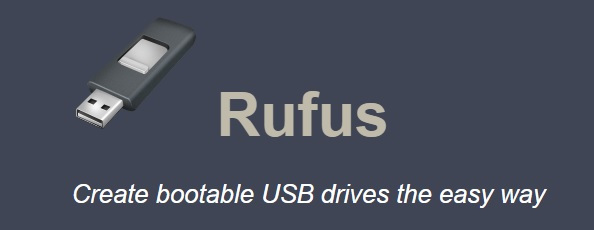

The roadmap is visible on (login is required), along with estimated release dates. The current maintained versions are: 10.3, 10.4, 10.5, 10.6, 10.11 (maintained for 5 years), 10.8, 10.9, 10.10, 11.0 (maintained for one year), and the development version is 11.1.Įach stable version receives bug-fixes and security fixes periodically.

With the new release model, there will be multiple short-term releases each year, in addition to less frequent long-term Until MariaDB Server 10.6, MariaDB Server has had about one stable major release every year. MariaDB Foundation ensures that MariaDB Server has a steady cadence of releases. OS: Windows XP / Vista / 7 / 7 64 bit / 8 / 8 64 bitĭownload Rufus 2.0 Build 623 Beta / Mirror File Size: 1 MBĭownload Rufus 1.4.12.535 Final / Mirror File Size: 1 MBĭownload Rufus 1.4.12.To help with automating downloads of MariaDB Server and related files, MariaDB Foundation has exposed a REST API. * Other improvements and fixes Rufus System Requirments: * Fix write error for DD images that are not a multiple of the sector size * Fix broken VHD support for non-English version of Windows * Fix a crash on image selection when no device is present * Add Norwegian translation, courtesy of JED * Add support for non Microsoft VHD drivers * Add support for Windows multipart install.swm * Add seamless UEFI boot of NTFS partitions, for Windows ISOs with large files (>4GB) * Add native decompression support for DD images (.Z. * Add portable application support, through a ‘rufus.ini’ file

* Add support for Grub4DOS and GRUB 2 based images (e.g. * Add support for Windows To Go (when Rufus is running on Windows 8 or later) * Additional info: Major UI improvements (improved font, new info field, no separate progress dialog, etc.) There is also a portable edition available. To sum it up, Rufus is a straightforward solution to formatting and creating bootable USB drive, providing users with a series of useful features. We have not come across any issues during our tests, since the utility did not cause Windows to hang or crash. It carries out a format task rapidly and error-free, using low system resources. The program records all activity to a separate panel, and it can be saved to a LOG file. extra partition), and you may use Rufus MBR with a selected BIOS ID. You can easily create bootable USB sticks for any Windows (or other OS) using the original ISO image!Īdvanced tweaks can make Rufus list fixed (non-flash) or unpartitioned USB flash disks, add fixes for old BIOS (e.g.

Plus, you can set the quick format mode, create an extended label and icon files, as well as create a bootable disk using an ISO image. Basic formatting options enable you to check the device for bad blocks, and select the algorithm type (from 1 to 4 passes).


 0 kommentar(er)
0 kommentar(er)
